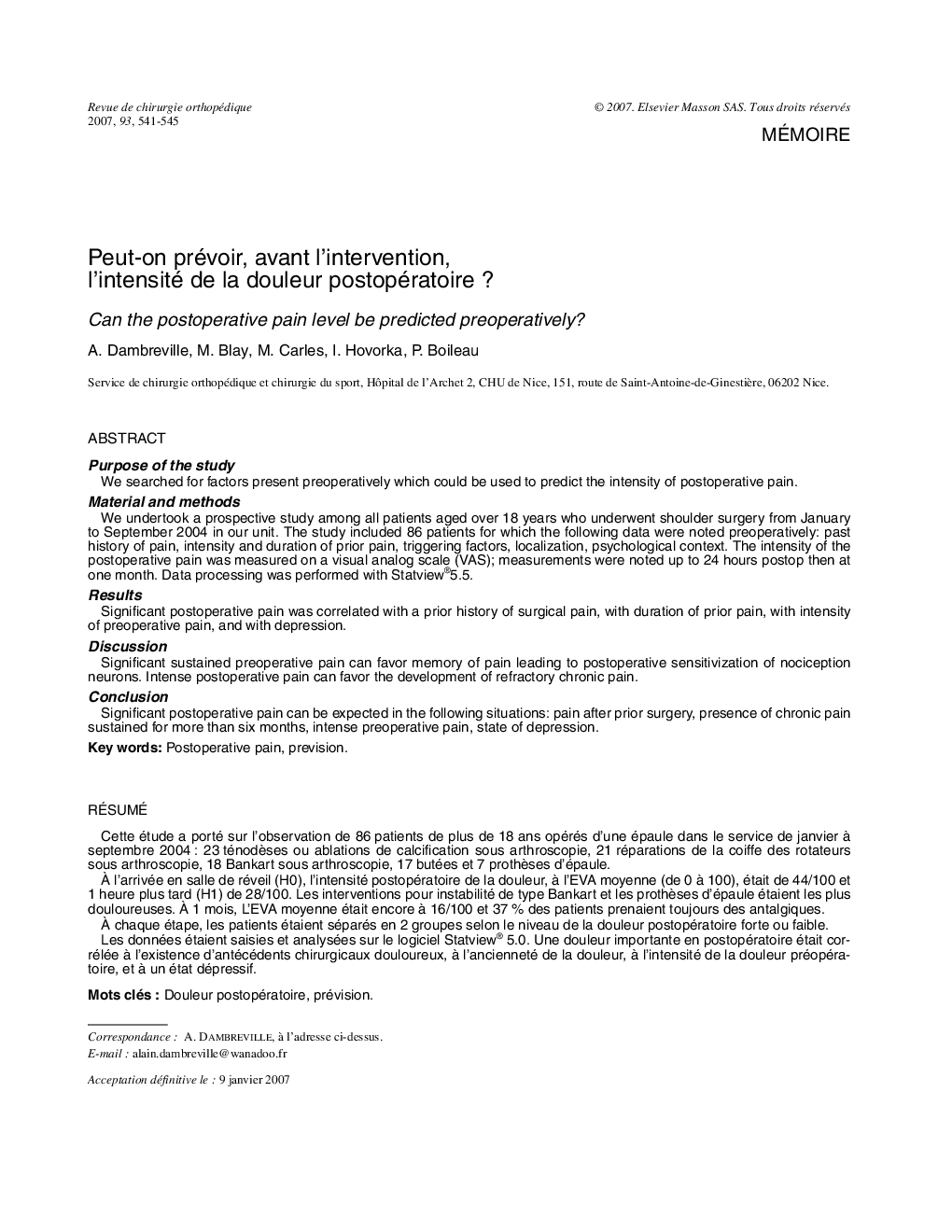| کد مقاله | کد نشریه | سال انتشار | مقاله انگلیسی | نسخه تمام متن |
|---|---|---|---|---|
| 4088571 | 1268109 | 2007 | 5 صفحه PDF | دانلود رایگان |

RésuméCette étude a porté sur l’observation de 86 patients de plus de 18 ans opérés d’une épaule dans le service de janvier à septembre 2004 : 23 ténodèses ou ablations de calcification sous arthroscopie, 21 réparations de la coiffe des rotateurs sous arthroscopie, 18 Bankart sous arthroscopie, 17 butées et 7 prothèses d’épaule.À l’arrivée en salle de réveil (H0), l’intensité postopératoire de la douleur, à l’EVA moyenne (de 0 à 100), était de 44/100 et 1 heure plus tard (H1) de 28/100. Les interventions pour instabilité de type Bankart et les prothèses d’épaule étaient les plus douloureuses. À 1 mois, L’EVA moyenne était encore à 16/100 et 37 % des patients prenaient toujours des antalgiques.À chaque étape, les patients étaient séparés en 2 groupes selon le niveau de la douleur postopératoire forte ou faible.Les données étaient saisies et analysées sur le logiciel Statview® 5.0. Une douleur importante en postopératoire était corrélée à l’existence d’antécédents chirurgicaux douloureux, à l’ancienneté de la douleur, à l’intensité de la douleur préopératoire, et à un état dépressif.
Purpose of the studyWe searched for factors present preoperatively which could be used to predict the intensity of postoperative pain.Material and methodsWe undertook a prospective study among all patients aged over 18 years who underwent shoulder surgery from January to September 2004 in our unit. The study included 86 patients for which the following data were noted preoperatively: past history of pain, intensity and duration of prior pain, triggering factors, localization, psychological context. The intensity of the postoperative pain was measured on a visual analog scale (VAS); measurements were noted up to 24 hours postop then at one month. Data processing was performed with Statview®5.5.ResultsSignificant postoperative pain was correlated with a prior history of surgical pain, with duration of prior pain, with intensity of preoperative pain, and with depression.DiscussionSignificant sustained preoperative pain can favor memory of pain leading to postoperative sensitivization of nociception neurons. Intense postoperative pain can favor the development of refractory chronic pain.ConclusionSignificant postoperative pain can be expected in the following situations: pain after prior surgery, presence of chronic pain sustained for more than six months, intense preoperative pain, state of depression.
Journal: Revue de Chirurgie Orthopédique et Réparatrice de l'Appareil Moteur - Volume 93, Issue 6, October 2007, Pages 541-545